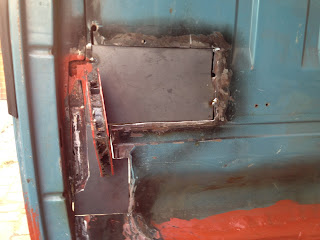I've built a run stand so that I can test the engine before it goes back in.
I got a 12v gearbox end and welded up a frame to support it. The 'Dashboard' with the main power toggle, oil pressure light and coil switch I made from a spare wheel tub end I had lying around.
All of the toggles, lights and push to make switch are from Maplins.
Since I made the video above, I've also wired in the alternator as that's ultimately what I'll be replacing and testing.
The frame is 50mm square section and cost £40. The gearbox end was around £30. Then around £20 for switches, lights, wires and sundries. (I did replace the bushing in the gearbox).
Here are a few pictures I took whilst building the frame.
I ran the base to either side of the engine for sturdiness, and to allow me to jack up the engine from the centre to bolt it in.
The fuel tank was £7, it's for a petrol strimmer. I thought I'd put a filter in.
Here is the stylish mudguard / dashboard.
Keeps the wiring tidy and out of the way.
I got the heatproof (silicon I believe) hose for around £50



















































